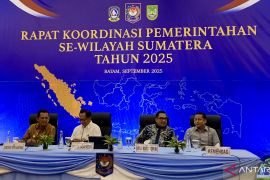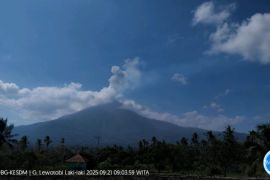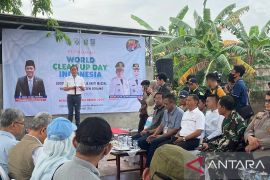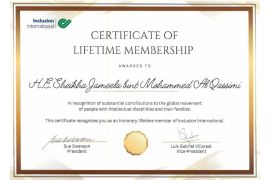Twenty nine different cetacean species inhabit Indonesian waters, several of which are rare and endangered, according to APEX Environmental. More than one third of all known whales and dolphins species worldwide can be found in Indonesian waters.Jakarta (Antara News)- With over 17 thousand islands, Indonesia is the largest and most varied archipelago on Earth and spans over 5,000 equatorial kilometres between Asia and Australia.
Its total coastline extends over 80,000 km, close to one third of the Earths circumference at the equator.
So, it is not surprising if Indonesian waters have an exceptionally high whale and dolphin diversity.
Twenty nine different cetacean species inhabit these waters, several of which are rare and endangered, according to APEX Environmental, an environmental organization with extensive expertise in oceanic whale and dolphin surveys, and cetacean ecology research.
More than one third of all known whales and dolphins species worldwide can be found in Indonesian waters, according to APEX, whose Indonesian Oceanic Cetacean Program (IOCP) has conducted research in Bunaken, Tua Marine Park and Sangihe Talaud in North Sulawesi, and Komodo National Park in East Nusa Tenggara (NTT).
Indonesias tropical cetaceans include Spinner, Spotted, Indo-pacific Bottlenose, Frasers and Rough-toothed Dolphins, as well as Melon-headed, False Killer, Pygmy Killer Whales and Edens Whale.
NTTs traditional whale hunting community in Lamalera, on the south coast of the island of Lembata, and Lamakera in neighbouring Solor, are the most famous and last two remaining Indonesian whaling communities.
The people in Lamalera hunt sperm whale and orca. The hunters have religious taboos that ensure that they use every part of the animal. About half of the catch is kept in the village; the rest is traded in local markets, using barter system.
The only species of whale which is not hunted is the blue whale (Balaenoptera musculus), because according to local folklore, the blue whale once rescued a family in Lamalera and is considered holy.
The whale-hunts are carried out in a traditional manner, with bamboo spears and using small wooden outriggers, 10-12 m long and 2 m wide, constructed without nails and with sails woven from palm fronds.
The animals are killed by the harpooner leaping onto the back of the animal from the boat to drive in the harpoon.
The World Wildlife Fund has carried out surveys in the village to determine that the limited hunting does not endanger world whale stocks or other endangered species.
Given the fact that East Nusa Tenggara has a huge potential to develop whale watching tourism, the government is planning to promote whale-watching tourism internationally.
"As long as I know, the province has 10 species of whale. Please do me a favor and promote it," Safri Burhanuddin, deputy of the Coordinating Minister for Maritime Affairs, said in Kupang, NTT, recently.
Various species of whale and the unique traditions and culture in the province could woo tourists, he said.
He instructed the local maritime and fishery office to monitor the best locations and time for whale watching activities.
East Nusa Tenggara Governor Frans Lebu Raya has lauded the plan to promote whale migration sites to boost tourist arrivals in the province.
"We have urged a whale researcher from Australia to map the whale migration route and schedule," the governor noted, and made a reference to Benjamin Kahn, a cetacean researcher and director of the Coral Triangle Oceanic Cetacean Program for APEX Environmental.
Kahn is an Adjunct Research Fellow in the Centre of Marine Science and Technology at Curtin University in Perth, Western Australia.
The scientist first worked with Oceanic Society in 2015 aboard "Raja Ampat: Snorkeling and Whale Watching expedition."
Benjamin Kahns research showed that whales migrate from the Australian waters to the NTT waters, especially to the Lamalera waters, where the fishermen hunt these species, he explained.
However, the research conducted by Kahn has yet to reveal precisely when the whales migrated from other sites to the Indonesian waters, the governor said.
"Whale migration will be a new tourist attraction in order to realize the potential of NTT as a tourist province," Raya stated.
The provincial administration needed to intensify its promotional activities to introduce this unique tourism attraction, the governor emphasized.
He suggested that an international seminar on whale fishing during the hunting season, which takes place from May to October, be organized as a promotional event.
Besides NTT, Raja Ampat Islands located in West Papua Province is also an amazing site to watch whales and dolphins.
Oceanic Society has planned another unique cruise experience that combines high-tech whale watching with snorkeling Raja Ampats outstanding marine ecosystems in February 2017.
"Weve teamed up with local experts to bring you this top-notch marine wildlife cruise. Oceanic Society travelers will gain 20+ years of local knowledge as we partner with the experts of the Pindito, one of the original live-aboard ships of Raja Ampat. This program is tailor made to offer our guests unrivaled opportunity to locate and possibly snorkel with whales and dolphins, including orcas, pilot whales, sperm whales, Brydes whales and more," the Oceanic society said on its website. ***1***
(f001/INE)
26-03-2016 21:15:21
Reporter: Fardah
Editor: Fardah Assegaf
Copyright © ANTARA 2016











